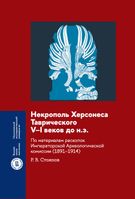
Stoyanov R., М. : Издательский дом НИУ ВШЭ, 2024
Монография посвящена публикации и анализу материалов V–I вв. до н.э., полученных в результате обширных археологических исследований, проведенных под руководством Императорской Археологической комиссии на территории некрополя греческой колонии Херсонес, расположенной на Крымском полуострове в Северном Причерноморье.
В первых двух главах монографии дается описание и общий обзор топографии и истории раскопок, анализируются конструктивные особенности и типология погребальных сооружений, ...
Added: April 27, 2024

Якимова О. А., Екатеринбург : Издательство Уральского университета, 2020
В учебном пособии процесс массовой коммуникации рассматривается через призму анализа механизмов, с помощью которых современные медиа формируют социальную реальность. Для объяснения влияния СМИ на аудиторию используется концепт медиадискурса, выделяются его модели и субъекты, разбирается схема конструирования отношения к социальному явлению или проблеме. Построенная теоретическая модель иллюстрируется материалами эмпирического исследования медиадискурса в контексте конструирования образов территории ...
Added: April 22, 2024

Родригес Р., Шталь Б. К., Шредер Д., М. : Издательский дом НИУ ВШЭ, 2024
Принято считать, что потенциальные выгоды от применения искусственного интеллекта (ИИ) велики: от операционных улучшений, таких как снижение числа человеческих ошибок, до использования роботов в опасных ситуациях. В то же время все понимают, что применение ИИ сопряжено со множеством этических проблем — от предвзятости в работе алгоритмов и цифрового разрыва до проблем здоровья и безопасности. В ...
Added: April 17, 2024

Baysha O., М. : Издательский дом НИУ ВШЭ, 2024
На примере Владимира Зеленского — бывшего комика, который поднялся на вершины политической власти, используя свой телесериал в качестве неофициальной политической платформы, — в книге рассматривается важность изучения философии постмодернизма. Именно она во многом дает ключ к пониманию того, как моделируется сегодняшний виртуально-реальный мир. Особый акцент сделан на философии Жана Бодрийяра с его идеей о том, ...
Added: April 17, 2024
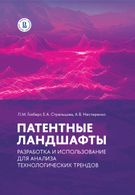
Издание содержит подробные рекомендации по формированию патентного ландшафта – проведению анализа патентных документов и научно-технической информации в целях изучения состояния, трендов и перспектив развития технологических областей или отдельных технологий. Последовательно рассматриваются основные понятия патентного анализа и источники данных для него, исследовательские методы и аналитические представления, используемые в патентных ландшафтах, алгоритм их построения и особенности применения. ...
Added: April 17, 2024

Вербицкая М. В., Belyaeva T. N., Быстрицкая Е. С., М. : Глосса-Пресс, 2008
Данное пособие построено на компетентностном подходе к подготовке профессиональных переводчиков. Книга содержит материалы,необходимые преподавателю на занятиях, дает понимание особенностей методики обучения устному переводу, исходя из специфики тех трудностей, с которыми устный переводчик сталкивается в своей работе. ...
Added: April 15, 2024

Napier A. D., Knipper M., Lovell R. et al., Copenhagen : World Health Organization Regional Office for Europe, 2017
This policy brief has been developed in response to the increasing awareness among policy-makers and the public health community of the important relationship between culture and health. By exploring the three key public health areas of nutrition, migration and environment, the policy brief demonstrates how cultural awareness is central to understanding health and well-being and ...
Added: April 14, 2024

Информационный обзор содержит отдельные результаты пятого раунда ежегодного конъюнктурного мониторинга цифровой активности промышленных предприятий России, характеризующие актуальные тенденции эко-инвестирования, восприятия респондентов (руководителей/менеджеров промышленных предприятий) различных выгод от внедрения эко-технологий, а также экосертификации в подотраслях промышленности и отдельных регионах. Одновременно в обзоре представлены планы развития на 2024 г. по разным направлениям совершенствования экологической и ресурсной эффективности.
Для ...
Added: April 11, 2024
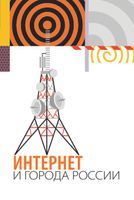
Shchetvina A., Dovbysh O., М. : Издательский дом НИУ ВШЭ, 2024
Aiming at critical understanding of the internet as both technology and sociocultural space, this book tells the story of the internet development in Russia’s cities. Through research expeditions to several large and small cities, the authors explore the significance of internet for local culture, business, governance as well as analyse changes in local media in ...
Added: April 9, 2024

М. : Ассоциация выпускников и сотрудников ВВИА им. проф. Жуковского, 2023
Представлены материалы международной научно-практической конференции. Сборник отражает современное состояние инноватики в образовании, науке, промышленности, социально-экономической сфере и медицине с позиций внедрения новейших информационных и коммуникационных технологий. Представляет интерес для широкого круга специалистов в области современных информационных и коммуникационных технологий, научных работников, преподавателей, аспирантов и студентов вузов, связанных с инновационной деятельностью. ...
Added: April 5, 2024

Mylnikov L., Пермь : Издательство ПНИПУ, 2021
Раскрыты вопросы, связанные с использованием формальных методов и информационных технологий при управлении, планировании и контроле реализации проектов и программ развития организационных систем. Приведены задания и вопросы для самоконтроля, которые помогут проверить качество усвоения материала и определить сценарий решения собственных задач на основе изложенного материала.
Предназначено для магистрантов направлений подготовки 09.04.04 «Программная инженерия» и 09.04.01 «Информатика и ...
Added: April 1, 2024

В монографии рассмотрены концепции и подходы к проектированию, реконструкции и исследованию информационной инфраструктуры, представлен метод структурно-функционального моделирования и способ исследования получаемых моделей с выделенным субъектом управления, оценки информационных инфраструктур, определения целевых показателей организационных систем и контроля их достижения, элементы целеполагания, бэнчмаркинга. В книге предложена новая нотация структурно-функционального моделирования (графическое и символьное представление), позволяющая исследовать с ...
Added: April 1, 2024

Naumov A. V., М. : Издательство Проспект, 2024
В сборник включены статьи А.В. Наумова опубликованные в период с 2014 по 2023 г. и посвященные вопросам научного обоснования обновления уголовного законодательства РФ и его применения в современных геополитических условиях. Это вызвано резким изменением взаимоотношений России и Запада. ...
Added: March 31, 2024

В докладе представлены результаты анализа международной академической мобильности и миграции научно-педагогических кадров в России в 2022 г. Рассматриваются итоги второй волны обследования миграционных потоков в государственных вузах и научных организациях, выполненного Институтом статистических исследований и экономики знаний Национального исследовательского университета «Высшая школа экономики» (ИСИЭЗ НИУ ВШЭ) при поддержке Минобрнауки России. Приводятся данные о вовлеченности российских организаций в международную академическую мобильность, масштабах и структурных характеристиках ...
Added: March 29, 2024
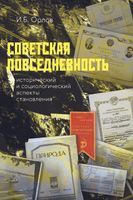
Orlov I. B., М. : Издательский дом НИУ ВШЭ, 2024
The monograph reveals the main aspects of Soviet everyday life in the context of accelerated and inorganic modernization of the country. The world of Soviet everyday life has been reconstructed according to the leading parameters: household services and household practices, industrial experience and labor relations, leisure and active forms of recreation, family experience and family ...
Added: March 28, 2024
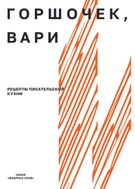
М. : Издательский дом НИУ ВШЭ, 2024
“Fill up the plate: writers’ cuisine recipes” is a collection of detailed instructions for beginners and successful writers. The book consists of seven parts: genre, plot, character, texture, style, editing, literary management. In each of them you will find recipes, examples, exercises, checklists and references — almost everything you might need on your writing journey. ...
Added: March 28, 2024

М. : Издательский дом НИУ ВШЭ, 2024
“Waiting Room” is a collection of short stories by writers — graduates of the Master’s program of the Higher School of Economics “Creative Writing”. Under the cover you will find stories in a variety of genres, realistic and fantastic narratives, familiar but nevertheless different characters. Seventeen stories are waiting for you, united by the motifs ...
Added: March 28, 2024

Wohlleben P., М. : Издательский дом НИУ ВШЭ, 2024
Лес — привычное и обыденное чудо. Поставщик древесины и кислорода, местообитание множества живых организмов, родина сказок и легенд, он кажется таким знакомым и понятным. Однако много ли нам известно о самих деревьях, об их чувствах и взаимоотношениях? Как они общаются между собой и можно ли освоить их язык? Чем отличаются городские деревья от своих лесных родственников? Существует ли связь между ...
Added: March 28, 2024

Настоящая книга является уникальным справочно-аналитическим изданием о популяции российских корпоративных университетов по состоянию на 2023 г. Его открывает ряд аналитических статей об актуальных аспектах работы корпоративных университетов. Далее представлен анализ результатов второй волны исследования становления и развития этих корпоративных университетов, проводимого с 2022 г. Высшей школой бизнеса НИУ ВШЭ, в том числе составлены портреты 51 ...
Added: March 25, 2024
Reznichenko S. I., Подтягина П. О., Экспериментальная психология 2024 Т. 17 № 1 С. 181-197
Статья посвящена исследованию влияния параметров профессионального опыта и субъективно воспринимаемых характеристик офисной среды на развитие выгорания IT-специалистов. Выборка включала 192 IT-специалиста в возрасте от 19 до 47 лет (Mвозр=29,76±5,15 лет; 21,4% — женщины), имеющих стаж работы в текущей компании 2,07±3,17 лет. Уровень профессионального выгорания и его компонентов (Истощение, Ментальная дистанция, Когнитивные нарушения, Эмоциональные нарушения и ...
Added: April 27, 2024
Замятина Н. Ю., Slavica occitania 2024 Vol. 58 P. 87-118
Cities of the Russian Arctic are exceptional due to the speed of their urbanisation, size, population, and extreme difficulty of everyday life and working conditions. The transformations undergone since their construction, and especially since the 1990s, are multifaceted. At the macro level, we examine the consequences of the construction of Arctic cities and the achievements ...
Added: April 26, 2024
Ilya S., Grigoriy M., Moskalenko I. et al., Physical Review Applied 2024 Vol. 21 No. 4 P. 0
Added: April 24, 2024
Seidov S., Mukhin S., Physical Review A: Atomic, Molecular, and Optical physics 2024 Vol. 109 No. 2 P. 0
Added: April 24, 2024
Letyaeva E., Вестник МГТА (Выпуск 30-31): сборник статей. - Москва: Издательство МГТА, 2015.-192с. 2015 № 2-3 С. 187-191
В статье рассматривается вопрос о необходимости введения в законодательство нового вещного права, гарантирующее застройщику сохранность объекта от произвола собственника земельного участка. ...
Added: April 23, 2024
Letyaeva E., Вестник МГТА (Выпуск 32): сборник статей - Москва: Издательство МГТА. 2015.-109с. 2015 № 4 С. 20-27
В статье рассматривается вопрос о применении правового механизма осуществления права застройки. Предполагаемая законопроектная конструкция не совпадает с имеющимися договорами, регулирующими отношения в области строительства, а представляет собой договор вещно-правового характера, отнесенный к регулированию земельных отношений. ...
Added: April 23, 2024
Bystritskiy A., Независимая газета 2024
У человечества есть основания для построения нового мирового порядка. ...
Added: April 23, 2024
Медиадискурс иностранной миграции в Россию в контексте конструирования межэтнического взаимодействия
Якимова О. А., Журнал социологии и социальной антропологии 2015 Т. 18 № 3 С. 123-136
This article tries to clarify the role of media in constructing Russians’ negative attitude toward international labour migrants. The content analysis of media documents pertaining to migration process (recipient territory, high-skilled and low-skilled migrants) allowed the author to identify four basic contradictions of contemporary media discourse as well as the interaction strategies of the indigenous ...
Added: April 22, 2024
Вовлечённость родителей в образование своих детей-студентов становится актуальным трендом, который связан с более поздней социализацией. Однако, вопрос о том, как именно родители проявляют своё участие на уровне вуза изучен недостаточно. Цель работы состоит в выявлении типов родительского участия в образовании студентов университета и описании отличительных черт этих типов. На основе кластерного анализа данных опроса студентов-первокурсников ...
Added: April 22, 2024
Letyaeva E., Ученые записки (Выпуск одиннадцатый): сборник статей. - Волгоград: Издательство ВИЭСП, 2011.- 300с. 2011 № 11 С. 218-221
Законодатель исходит из приоритета преимущественного права заказчика как клиента, поэтому если по договору предусмотрено возмездное оказание услуг самим исполнителем, он не вправе передавать свои права, а равно и обязанности по оказанию дополнительных услуг другому лицу, в томч исле и передоверять их ...
Added: April 22, 2024
Letyaeva E., Ученые записки (Выпуск десятый): сборник статей. - Волгоград: Издательство ВИЭСП. - 448с. 2010 № 10 С. 297-303
Услуга не может существовать вне своего носителя. Однако физическая неотделимость процесса создания продукта труда и самого продукта - услуги - не препятствует их раздельному научному анализу, тем более что экономическое содержание процесса производства услуги и продукта - услиги различно ...
Added: April 22, 2024
Gorskiy D., Applied Econometrics 2024
The paper utilises survival analysis to study the role of the Maternity Capital program, introduced in 2007 in Russia to stimulate families to have a second birth (or adopt a second child), in changing the birth spacing between the first and the second child. The empirical study is carried out on the microdata of the ...
Added: April 18, 2024
Бутакова Я. С., Цивилистика 2024 № 1 С. 24-36
В настоящий момент существует множество определений международных экономических санкций, при этом в доктрине отсутствует развёрнутый анализ данного явления как правовой категории и правового явления. В рамках данной статьи проанализированы международные экономические санкции как частноправовая или публично-правовая категория, как разновидность реторсий, репрессалий или рестрикций, или формы самопомощи пострадавшего государства. Автор обращает внимание, что современные санкции, являясь ...
Added: April 17, 2024
Башарин А. В., Позднякова П. В., Толстых В. Л. et al., Закон 2023 № 11 С. 130-131
The November Legal Chronicle presents professional opinions on the qualification of the Palestinian-Israeli conflict in accordance with international law, the search for a balance between forest protection and urban planning of settlements, and the next round of discussion of the arbitrability of disputes over real estate rights in the decisions of the Constitutional Court. ...
Added: April 17, 2024
Позднякова П. В., Закон 2023 № 10 С. 25-40
Author analyzes some positions of the Review of judicial practice on the application of environmental legislation, approved by the Presidium of the Supreme Court of the Russian Federation on June 24, 2022. This review is the first review of the practice of the Supreme Court of the Russian Federation, dedicated exclusively to environmental issues, and ...
Added: April 17, 2024
А.Г. Фонотов, Проблемы прогнозирования 2023 № 3 С. 158-172
Abstract—The article discusses a number of key provisions on the predictive prospects for the development
of research and development (R&D), presented by a team of authors of the INP RAS in a monograph that
provides a detailed description of the current state of Russian R&D, highlights the main problems that prevent
the full realization of its potential to ...
Added: April 17, 2024
Якимова О. А., Сибирский социум 2020 Т. 4 № 4 С. 22-40
Over the last decades, scholars have reported a high level of xenophobia in Russia, which persists and spreads amidst all strata of the population. This shows the significance of the migration issue in the country and its topicality in the public discourse. However, the explanatory models used to analyze the perception of immigrants in Western ...
Added: April 17, 2024
Iakimova O., Changing Societies and Personalities 2018 Vol. 2 No. 1 P. 17-31
In the last few decades xenophobic and extreme right-wing political movements have become increasingly strong electoral forces in many European countries. The Nordic countries have long been viewed as among the most tolerant countries in the world, with exemplary protection of minorities. Nevertheless, in Denmark, Norway, Sweden, and Finland, xenophobic parties also moved into first ...
Added: April 17, 2024
Iakimova O., Menshikov А., Changing Societies and Personalities 2019 Vol. 3 No. 4 P. 373-387
Since 2012 the compulsory course “Fundamentals of Religious Cultures and Secular Ethics” has been taught in all public schools of Russia. The introduction of the course compelled Russian scholars to engage in comparative research on the development of normative framework and teaching practice in religious education. Despite the importance of global trends and international debates, ...
Added: April 17, 2024
Кульпин С. В., Савчук Г. А., Якимова О. А., Мониторинг общественного мнения: Экономические и социальные перемены 2020 № 2 С. 168-190
The article attempts to explore how young people's motivation to create and maintain blogs related to healthy lifestyle is reflected in the blog content and investigates the relationship between the blog popularity and types of content. Using the motives (to bring the common good, to present the experience and personal growth, interactions with friends, opportunity ...
Added: April 17, 2024
Trenin D., , in : Security Index Yearbook. * 1: Global Security in the Times of Transition to a Multipolar World.: PIR Center, 2024.
Major powers are at war again. So far, it has been a proxy one, but waged on the territory of vital strategic importance to one actor, Russia, and in a key overseas area for the other, the United States of America. US NATO allies in Europe are also intimately involved. The implications of this conflict are vast and ...
Added: April 28, 2024
Terentev E., Kuznetsov P., , in : Global Perspectives on Enhancing Doctoral Co-Supervision. : Springer, 2024. P. 75-86.
The Russian doctoral education system experienced dramatic transformations in the last 30 years, which aimed to increase the completion rates and improve the quality of dissertations. However, these changes did not touch upon the supervision practices, which remain the same as in Soviet times. There is a legally approved opportunity to implement team supervision, but most ...
Added: April 27, 2024
Trenin D., , in : Global Security: A View from Russia for the Youth Around the World. Nuclear Nonproliferation and Arms Control. Issue 36.: PIR Center, 2024.
Do we really fear nuclear weapons? This question is certainly very good and poignant. However, it begs another question: “Who is this we?”. ...
Added: April 27, 2024
Gravin A. A., В кн. : Сборник материалов XXVI всероссийской научно-практической конференции молодых ученых «БОГ. ЧЕЛОВЕК. МИР», 21–23 декабря 2023 года. : СПб. : Издательство РХГА, 2024. С. 191-197.
The article considers the socio-philosophical concept of A. F. Losev in the 1920s - 1930s on the example of philosophical typologies developed by him in the works "Additions to the Dialectics of Myth" (1930), "Essays on Ancient Symbolism and Mythology" (1930), "Nicholas of Cusa and the Dialectical First Principle in Antique-Medieval Philosophy" (late 1920s - ...
Added: April 25, 2024
Tsatsenko N., В кн. : Сфера услуг в Африке: современное состояние и перспективы развития. : Институт Африки РАН, 2023. С. 42-44.
The purpose of this paper is to examine the characteristics of two opposing phenomena such as premature deindustrialization and renaissance of industrialization in Sub-Saharan Africa. The research objectives cover the analysis of literature on the role of manufacturing and service sectors in the current stage of structural transformation. The paper focuses on discussing the arguments ...
Added: April 25, 2024
Orlov I., В кн. : Армия и военные традиции на Ближнем Востоке. Сборник материалов 1-й Всероссийской научной конференции молодых ближневосточников. : СПб. : Арт-Экспресс, 2024. С. 61-76.
Образование ОАР в 1958 г. воспринималось многими политическими силами региона как большое достижение Насера и даже как некоторый естественный процесс объединения арабского народа. Как известно, этот проект был реализован в первую очередь благодаря стараниям сирийской политической элиты, а конкретнее – лидеров сирийской партии Баас. Однако без опоры на сирийских офицеров, а также без их активного ...
Added: April 24, 2024
Асалия А. А., В кн. : Армия и военные традиции на Ближнем Востоке. Сборник материалов 1-й Всероссийской научной конференции молодых ближневосточников. : СПб. : Арт-Экспресс, 2024. Гл. 1. С. 8-22.
Статья посвящена историографическому исследованию батальных сюжетов современного искусства Ирака и Палестины в искусствоведческой литературе ближневосточных авторов, которые отражают историю, культуру и традиции региона Ближнего Востока. Особое внимание уделяется научным работам иракских и палестинских исследователей XX–XXI вв. Анализируется степень изученности батального жанра в живописи арабских стран в ближневосточной академической среде. Рассматривается роль, которую занимает батальный жанр ...
Added: April 24, 2024
Novikova V., В кн. : Армия и военные традиции на Ближнем Востоке. Сборник материалов 1-й Всероссийской научной конференции молодых ближневосточников. : СПб. : Арт-Экспресс, 2024. Гл. 3. С. 49-60.
Для интерпретации истории еврейских общин в Султанате мамлюков (1250–1517) существует два противоположных подхода. Первый, созданный преимущественно в XX в., определяет историю евреев в этот период через состояние упадка, угнетения и изоляции общины. Второй, устоявшийся в работах современных исследователей, оспаривает эти категории и представляет еврейские общины полноценными субъектами в социально-экономическом и политическом ландшафте Султаната. Следуя за ...
Added: April 24, 2024
Isakov V., В кн. : Правовые вопросы воссоединения новых регионов с Российской Федерацией: коллективная монография. : Барнаул : Алтайский государственный университет, 2024. С. 290-297.
The article describes the author's trip to Donetsk, to the International Conference of Donetsk National University "Donetsk Readings 2016. Education, Science and the Challenges of Modernity". The content of the discussed scientific issues is revealed, the situation in the city of Donetsk as a result of the "restoration of constitutional legality" by Ukraine is shown ...
Added: April 24, 2024
Los A., Nesterenko A., Рогачева О. А., В кн. : Алгебра, теория чисел, дискретная математика и многомасштабное моделирование: современные проблемы, приложения и проблемы истории. Материалы XXII Международной конференции, посвящённой 120-летию со дня рождения академика Андрея Николаевича Колмогорова и 60-летию со дня открытия школы-интерната № 18 при Московском университете. : [б.и.], 2023. С. 151-157.
One of the requirements for the quality of cryptographic algorithms is the equiprobable distribution of the characters of the sequence obtained after applying the cryptographic transformation. This requirement is due to the fact that in the presence of unequal probability of signs of the output sequence, it becomes possible to construct an effective method for ...
Added: April 24, 2024
Tsatsenko N., В кн. : Труды III Гранберговской конференции: Новосибирск, 11–13 октября 2023 г.: Сборник докладов Всероссийской конференции с международным участием, посвященной памяти академика А.Г. Гранберга «Пространственный анализ социально-экономических систем: история и современность». : Институт экономики и организации промышленного производства СО РАН, 2023. С. 75-80.
This paper examines a variety of theoretical approaches to the relationship between the phenomenon of Dutch disease and structural shifts in the resource-rich economy. The mechanism of the learning by doing effect in the context of the Dutch Disease phenomenon are considered. Firstly, a brief description of the Dutch disease phenomenon itself and its two ...
Added: April 24, 2024
Aleksander L. Tuv, Maxim S. Akatov, Alina A. Opekunova et al., , in : Proceedings of the 2024 Conference of Young Researchers in Electrical and Electronic Engineering (2024 ElCon), St. Petersburg, Russia. : -, 2024. Ch. 19. P. 91-94.
The article discusses the main applications of fiber-optic sensors, including monitoring of production processes, medical diagnostics, and scientific research. The authors consider the basic principles of operation of fiber-optic sensors as well as their advantages over other types of sensors. The main attention is paid to the description of various measurement methods using fiber-optic technologies, ...
Added: April 22, 2024
Zinchenko S., Солька А. А., В кн. : История и теория культуры : Альманах. Вып. 4.: М. : Издательство Московского университета, 2024. С. 116-137.
Our article aims to bring some clarification genesis on the so-called snake deities in Minoan world and identify which parallels can be found in ancient Near East cultures, including in Elam but also in Mesopotamia, Egypt, Bactria, Margiana and Syro-Palestine, Phoenician regions.
There have been many different studies on this topic but none has tried to ...
Added: April 22, 2024
Puchkin N., Gorbunov E., Kutuzov N. et al., , in : Proceedings of The 27th International Conference on Artificial Intelligence and Statistics (AISTATS 2024), 2-4 May 2024, Palau de Congressos, Valencia, Spain. PMLR: Volume 238. Vol. 238.: Valencia : PMLR, 2024. P. 856-864.
We consider stochastic optimization problems with heavy-tailed noise with structured density. For such problems, we show that it is possible to get faster rates of convergence than 𝑂(𝐾^{−2(𝛼−1)/𝛼}), when the stochastic gradients have finite 𝛼-th moment, 𝛼∈(1,2]. In particular, our analysis allows the noise norm to have an unbounded expectation. To achieve these results, we stabilize stochastic gradients, ...
Added: April 22, 2024
Gaete Sepulveda M. A., В кн. : Благополучие в образовании: современные исследования: сборник научных статей. : М. : НИУ ВШЭ, Институт образования, 2024. С. 125-150.
This article aims to formulate recommendations for the formation of student psychological support strategies that take into account the new reality universities are operating in after the COVID-19 pandemic. It highlights the practices of providing psychological support to students to deal with the stress in the academic environment. In the course of the research, content ...
Added: April 20, 2024
Gaete Sepulveda M. A., Gorbunova E., Крылова И. et al., В кн. : Благополучие в образовании: современные исследования: сборник научных статей. : М. : НИУ ВШЭ, Институт образования, 2024. С. 151-175.
Research shows that university students are a vulnerable group in terms of psychological wellbeing, due to the stress they face in adjusting to a new environment — particularly in the aftermath of the pandemic of COVID-19. However, a barrier to accessing psychological support may be low awareness about psychological services; a tool for raising this awareness ...
Added: April 20, 2024
Novikova M., Ivanov I., Угарова М. Г., В кн. : Благополучие в образовании: современные исследования: сборник научных статей. : М. : НИУ ВШЭ, Институт образования, 2024. С. 101-124.
Participation in extracurricular activities has a positive effect on various aspects of children’s development. Research shows that involvement in extracurricular activities is also interrelated with the student’s psychoemotional well-being that is widely considered in the context of academic success. Moreover, in recent years, it has shifted the focus of attention of researchers, who previously mainly ...
Added: April 25, 2024
Gupta R., Yelizarov (Elizarov) A. A., Nazarov I. et al., , in : 2024 Systems of signals generating and processing in the field of on board communications. : IEEE, 2024. P. 1-5.
This paper presents a balun architecture with the inherent impedance transformation between the balanced and unbalanced ports. Also, the balun provides the isolation between the balanced ports while working at the two arbitrary frequencies concurrently. The systematic design analysis of the proposed balun architecture is also provided in the paper with the analytical design equations ...
Added: April 18, 2024
Григоровская А. В., В кн. : Коллективная память: власть прошлого в социокультурной жизни Америки. : М. : Изд-во РГГУ, 2021. С. 268-278.
В статье рассматриваются русские трансофрмации "американской мечты" в романах Айн Рэнд. ...
Added: April 18, 2024
Пилюгина П. И., В кн. : Проблемы истории и культуры средневекового общества: Материалы XLIII всероссийской научной конференции студентов, аспирантов и молодых ученых «Курбатовские чтения» (7–9 ноября 2023 г.). : СПб. : Скифия-принт, 2024. С. 500-508.
This article analyzes images of the Welsh law that were emerging in the English sources of the 12th and 13th centuries. Welsh law differed significantly from canon law and from English common law. These differences were the focus of attention of English authors, who used them to create a colonial narrative of the inability of ...
Added: April 17, 2024
Abdrakhmanova G., Kovaleva G. G., Bulchenko N. V., / NRU Higher School of Economics. Series WP BRP 56/STI/2016 "Basic Research Program Working Papers Series: Science, Technology And Innovation". 2016.
This working paper summarizes the results of a study to ‘measure’ the information industry as a segment of the economy producing goods and services linked to ICT and content. Methodological approaches are proposed to establish the ‘Information industry’ definitions based on the Russian Classification of Economic Activities (OKVED) and the Russian Classification of Products by ...
Added: April 3, 2024
Moreno-Franco H. A., Pérez J., / Cornell University. Серия arXiv "math". 2024.
We study the optimal bailout dividend problem with transaction costs for an insurance company, where shareholder payouts align with the arrival times of an independent Poisson process. In this scenario, the underlying risk model follows a spectrally negative Lévy process. Our analysis confirms the optimality of a periodic (b_1,b_2)-barrier policy with classical reflection at zero. ...
Added: March 27, 2024
Ossadtchi A., Semenkov I., Zhuravleva A. et al., / Cold Spring Harbor Laboratory. Series http://dx.doi.org/ "BioRxiv". 2024.
Added: March 15, 2024
Selezneva E., Sharepina E., Kareva D., / НЦМУ "Центр междисциплинарных исследований человеческого потенциала. Серия 0000 "Научный дайджест НЦМУ". 2023. № 12 (29).
В пандемию COVID-19 сформировались специфические факторы, которые препятствовали получению медицинской помощи населением. Цель исследования – оценить влияние социально-экономического положения граждан России старшего поколения на доступность для них медицинской помощи в период пандемии. Эмпирической основой исследования являются данные Национального исследования старшего поколения (НИСП), репрезентирующего население России в возрасте от 50 лет по основным социально демографическим показателям. Выборка обследования составила ...
Added: February 19, 2024
Gorishniy Y., Rubachev Ivan, Kartashev Nikolay et al., / arxiv. Series 2307 "14338v2". 2023.
Deep learning (DL) models for tabular data problems (e.g. classification, regres- sion) are currently receiving increasingly more attention from researchers. However, despite the recent efforts, the non-DL algorithms based on gradient-boosted de- cision trees (GBDT) remain a strong go-to solution for these problems. One of the research directions aimed at improving the position of tabular ...
Added: February 19, 2024
In this study, we investigated eye movements during silent reading in 222 typically developing Russian children from grades 1 through 6. First, we established eye-movement benchmarks and detected two periods (between grades 1-2 and grades 3-4) when reading development was the fastest. We compared the basic eye-movement measures in children to those in adults and ...
Added: February 12, 2024
Popova S., Ivanova N. S., Styrin K., / Банк России. Series Серия докладов об экономических исследованиях "Bank of Russia Working Paper Series". 2024.
This paper asks the following questions. How does market structure reshape the transmission of monetary policy to bank lending? How are loan characteristics such as loan volume, maturity, lending rate, risk, and the extensive margin of lending affected? Is there a trade-off between financial stability and the strength of monetary transmission? We find that, on ...
Added: February 8, 2024
Goncharenko R., Mamonov M., Ongena S. et al., / CEPR. Series 2022/2 "CEPR Discussion Paper No. DP17015". 2022.
In this paper, we analyze how firms search for new lenders after a financial regulator forcibly closes their prior banks, and what happens to the firms' performance during this transition period. In 2013, the Central Bank of Russia launched a large-scale bank closure policy and started detecting fraudulent (sin) banks and revoking their licenses. By ...
Added: February 8, 2024
This study examines the receipt of instrumental (help with care or household chores) transfers by elderly people from other family members. Primarily children. The main objective of the paper was to assess the impact of the distance of children from their parents' household on the provision of such transfers.
The paper was written on material from ...
Added: February 3, 2024
Kochetkov Y., / Cornell Univercity. Series arXiv.org e-print archive "arXiv.math". 2004. No. 2401.11208.
A cubic Galois polynomial is a cubic polynomial with rational coefficients that defines a cubic Galois field. Its
discriminant is a full square and its roots $x_1,x_2,x_3$ (enumerated in some order) are real. There exists (and only one) quadratic polynomial $q$ with rational coefficients such that $q(x_1)=x_2, q(x_2)=x_3, q(x_3)=x_1$. The polynomial $r=q(q) \text{ mod } p$ cyclically permutes roots of $p$ ...
Added: February 1, 2024
Pospelov N., Chertkov A., Beketov M. et al., / Cornell University. Series arxiv:cs.NE "arxiv Neural and Evolutionary Computing". 2023.
Neural networks (NNs), both living and artificial, work due to being complex systems of neurons, each having its own specialization. Revealing these specializations is important for understanding NNs inner working mechanisms. The only way to do this for a living system, the neural response of which to a stimulus is not a known (let alone ...
Added: January 24, 2024
Fedotova I., / osf.io. Series No "Arts and Humanities". 2023.
Added: January 21, 2024
DAREL: Data Reduction with Losses for Training Acceleration of Real and Hypercomplex Neural Networks
Demidovskij A., Трутнев А. И., Тугарев А. М. et al., / OpenReview. Series ZmuLcqwzkl "NeurIPS 2023 Workshop". 2023.
Neural network training requires a lot of resources, and there are situations where training time and memory usage are limited. It makes specialized algorithms for training neural networks within the constraints of resource limitations an important and significant challenge. Data Reduction with Losses is a novel training data reduction method that operates with training samples ...
Added: January 17, 2024
Penikas H. I., / Банк России. Серия Серия докладов Банка России "Серия докладов об экономических исследованиях". 2023. № 121.
Default correlation parameter has a material impact on the loan portfolio credit risk. Moreover, the impact is more complex than that of the default probability itself. Current study shows that the rise in default correlation can simultaneously lead to multi-directional changes in different types of risk-measures or focus on a single risk measure, but at different confidence levels. The cause for such dual impact lies in the often neglected rising impact of the default rate (DR) distribution bimodality. ...
Added: December 27, 2023
We study the problem of optimal risk policies and dividend strategies for an insurance company operating under the constraint that the timing of shareholder payouts is governed by the arrival times of a Poisson process. Concurrently, risk control is continuously managed through proportional reinsurance. Our analysis confirms the optimality of a periodic-classical barrier strategy for ...
Added: December 25, 2023
Penikas H. I., / IEEE. Series Series 5-6 Dec. 2021 "2021 International Conference on Sustainable Islamic Business and Finance". 2021.
Default correlation presence imply higher credit losses. Its proper identification from empirical data is challenging. It turns out that the real-world data is a mixture of distributions, rather than a homogenous one. We show how to model it using a mixture of correlated Bernoulli ones. We show that the United States total loan loss statistics ...
Added: December 1, 2023
Penikas H. I., / Адыгейский государственный университет. Серия материалы IV Международной научной конференции ""ОСЕННИЕ МАТЕМАТИЧЕСКИЕ ЧТЕНИЯ В АДЫГЕЕ (ОМЧА)"". 2021. № 90-94.
Данные об исторической эволюции доли дефолтов, на первый взгляд, позволяют сделать вывод о величине корреляции дефолтов в предположении наличия ее некоторого усредненного значения для всех заемщиков. Однако, получаемая таким образом корреляция дефолтов, как правило, не позволяет точно описать наблюдаемое распределение доли дефолтов. Это говорит о том, что нельзя рассматривать такие данные в совокупности, а необходимо ...
Added: December 1, 2023
Selin A. A., Левин Ф. Е., Хвальков Е. А. et al., / Издательский дом НИУ ВШЭ. Series WP "Working Papers of Humanities". 2020. No. 197.
Added: November 30, 2023
Panidi K., Гребенщикова Я. С., Klucharev V., / Cornell University. Series 2311.09885 "arxiv.econ.GN". 2023.
In the present study, we use an experimental setting to explore the effects of sugar-free labels on the willingness to pay for food products. In our experiment, participants placed bids for sugar-containing and analogous sugar-free products in a Becker-deGroot-Marschak auction to determine the willingness to pay. Additionally, they rated each product on the level of ...
Added: November 30, 2023
Kapeliushnikov R., / Высшая школа экономики. Серия WP3 "Проблемы рынка труда". 2023. № WP3/2023/01.
The paper analyses the metaphor of “invisible hand” which was introduced more than two and a half centuries ago by Adam Smith and has become the central concept of the modern economics. Several issues that attract today the most attention are discussed: 1) what is the general idea behind Smith’s metaphor, what meaning did he ...
Added: November 23, 2023